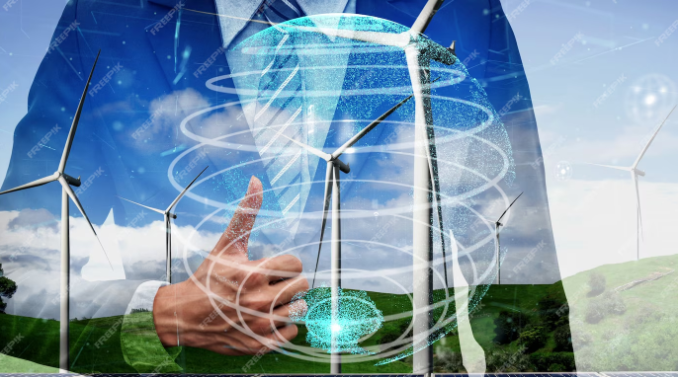Tech Innovations in Renewable Energy
In recent years, there has been a growing recognition of the urgent need to transition towards sustainable energy sources. As the world grapples with the consequences of climate change and the depletion of fossil fuels, the potential of renewable energy has come into sharp focus. Renewable energy, derived from sources such as sunlight, wind, and water, offers a promising solution to our energy needs while mitigating the harmful environmental impacts associated with traditional forms of energy production. However, unlocking the full potential of renewable energy today is not just about transitions but through continuous innovation, breakthroughs, and technological advancement.
Trends in Green Technology
Solar Power: Harnessing the Power of the Sun
Solar power has emerged as one of the most promising renewable energy sources, with advancements in photovoltaic (PV) technology leading to more efficient solar panels and a significant reduction in costs. The adoption of solar power has been growing exponentially worldwide, with solar installations becoming increasingly common in both residential and commercial settings. Innovations such as solar roof tiles, solar windows, and transparent solar panels are transforming the way we incorporate solar power into our everyday lives. Additionally, large-scale solar farms and floating solar installations on water bodies are revolutionizing the way we generate electricity from the sun.
Wind Energy: Tapping into the Power of the Wind
Recent innovations have expanded the potential of wind energy. The development of larger and more efficient wind turbines has significantly increased the electricity generation capacity of wind farms. Furthermore, advancements in offshore wind technology are opening up vast untapped resources for wind energy production. Floating wind farms, located in deep waters, offer immense potential for harnessing stronger and more consistent wind currents. The integration of artificial intelligence and machine learning in wind turbine design and operation is also improving efficiency and optimizing power output.
Energy Storage: Paving the Way for Renewable Integration
The intermittent nature of renewable energy sources poses challenges for their integration into existing power grids. However, advancements in energy storage technologies are playing a crucial role in addressing this issue. Lithium-ion batteries have become the dominant form of energy storage, with rapidly declining costs and increased efficiency. In addition to batteries, other innovative solutions such as pumped hydro storage, compressed air energy storage, and advanced flow batteries are emerging as viable options for storing renewable energy. These storage technologies enable the smooth integration of renewable energy into the grid, ensuring a stable and reliable power supply.
Smart Grids and Microgrids: Empowering Local Energy Systems
The development of smart grids and microgrids is transforming the way energy is distributed and consumed. Smart grids utilize advanced sensors, communication networks, and data analytics to optimize energy usage, reduce wastage, and improve grid stability. They enable the seamless integration of renewable energy sources, electric vehicles, and energy storage systems, creating a more efficient and resilient energy infrastructure. Microgrids, on the other hand, provide localized power generation and distribution, often incorporating renewable energy sources. They offer communities, businesses, and even remote areas the ability to become energy self-sufficient and independent of the main grid.
Bioenergy and Geothermal: Expanding the Renewable Portfolio
While solar and wind power dominate the renewable energy landscape, there are other promising sources that are gaining traction. Bioenergy, derived from organic matter, encompasses biofuels, biomass power plants, and biogas production. It offers a sustainable solution for both electricity generation and transportation fuels. Geothermal energy, obtained from the heat stored within the Earth, is another clean and reliable source of power. Enhanced geothermal systems and geothermal heat pumps are driving innovation in this field, making geothermal energy more accessible and cost-effective.
Hydrogen and Fuel Cells: A Versatile Energy Carrier
Hydrogen has emerged as a versatile energy carrier with the potential to revolutionize various sectors. It can be produced from renewable sources through electrolysis and used for transportation, industrial processes, and power generation. Fuel cells, which generate electricity through a chemical reaction between hydrogen and oxygen, offer a clean and efficient alternative to traditional combustion engines. Fuel cell-powered vehicles and stationary fuel cells for residential and commercial applications are gaining momentum, showcasing the transformative potential of hydrogen as an energy source.
The Future of Green Technology
The future of renewable energy is poised to revolutionize the global energy landscape. With continued investments, supportive policies, and global collaboration, green technology will continue to evolve, offering cleaner, more efficient, and cost-effective solutions for meeting our energy needs while reducing our carbon footprint. As we embrace these technologies and strive for a greener future, we can pave the way for a resilient and sustainable planet for generations to come.
For more information, visit on our mail id:-admin@innovationalofficesolution.com

